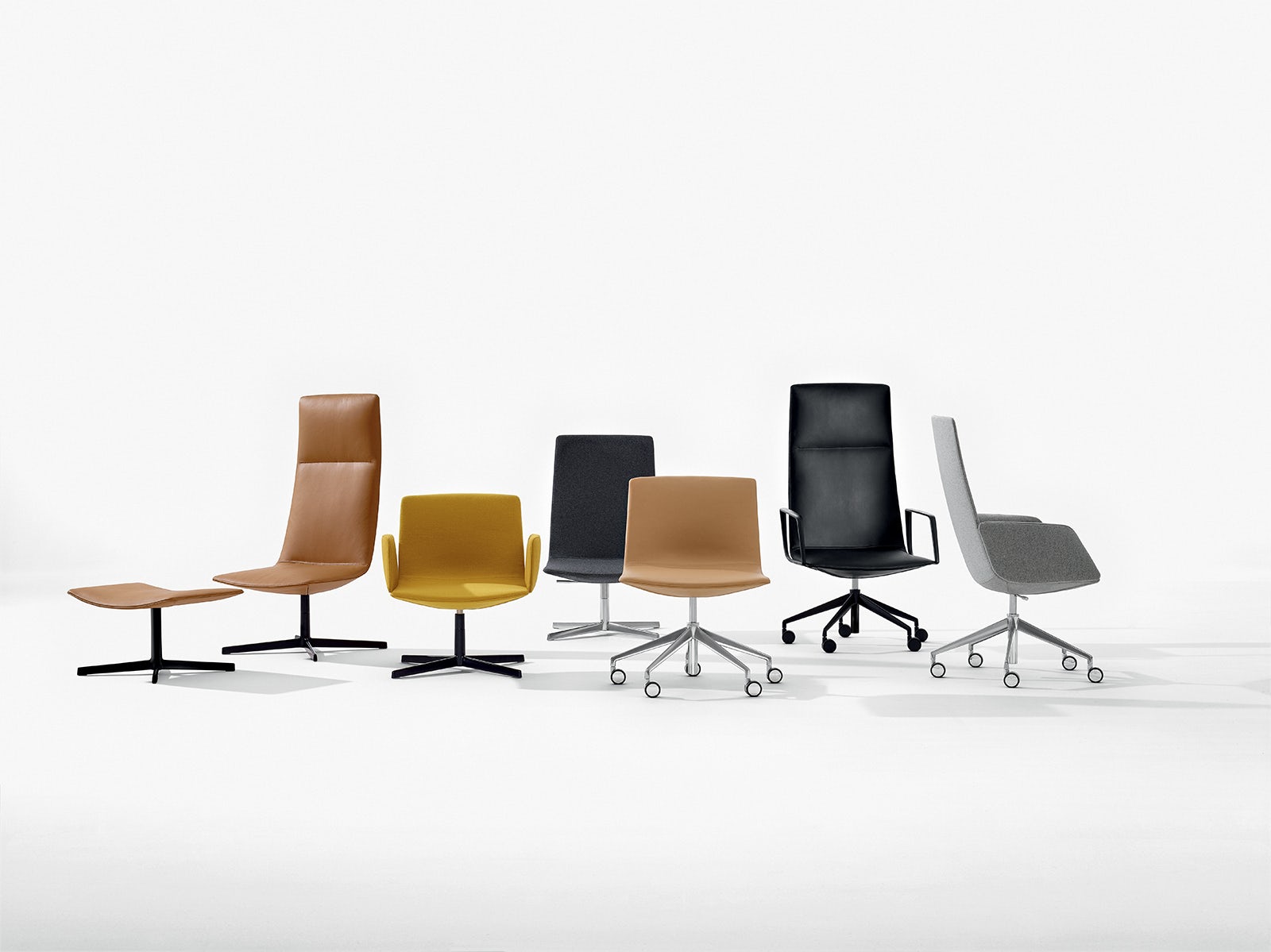Chairs are pivotal to the existence of most manmade spaces. Arguably so, architects tend to agree, as they themselves were the first furniture designers of the early 20th century. The call to duty was out of necessity; the market simply didn’t supply enough decent seating to fill the buildings that architects built. Surely enough, the rise of machine production and industrial design as a legitimate profession changed the future of seating forever.
Nowadays, the market is saturated with more chairs than anyone has use or room for in a common space. Among the vast variety of chairs, a lot of pieces are familiar to design enthusiasts and architecture and design history students, whether they are iconic on their own — such as Mie van der Rohe’s Barcelona chair — or because they so precisely mimic the architect’s style. Regardless, chairs stand as designed objects that are as rich and complex as a building.
Below, you’ll find a set of chairs imagined by designers of buildings, designers of products, designers of furniture, and designers of whatever other things there are to be designed. This collection of 10 chairs explores the rich complexity required to serve their main function: comfort.


This traditional office chair synchronizes its movement with an integrated mechanism discreetly located in the back. Available in three backrest heights, every chair in the seating collection allows users to seamlessly incline, relieving pressure on the lower back and offering full ergonomic support.


Conceived in 2006 by Jean-Marie Massaud, the form in this seating collection defies the conventions of the typical boardroom chair or executive lounge with its linear profile and aerodynamic lines engineered for comfort and performance. Available in three different back heights — Conference, Office, and Direction — Aston is ergonomic yet light.


Designed in 2012 by Lievore Altherr Molina, Saya is rendered in wood as both a chair and a stool and available in a mini version designed for children. Fluid in line, warm in material, its silhouette won the Interior Innovation Award 2014, Red Dot’s “Best of the Best” Product Design Award 2013, and the ADI Design Index 2013 nomination for the Living category.


Designed in 2004 by Rodolfo Dordoni, the sumptuous Corte armchair combines slim, sleek lines and ample surfaces. Its solid, sculptural presence and broad range of materials make it well-suited for both residential and commercial uses.


Designed in 2005, Lievore Altherr Molina reduced the form of this chair to its essence, the formal purity leavened by vibrant colors, natural materials, lively details, and topstitching. Stark, lightweight, and polished, Norma is available in three back heights — as a stool or lounge seat upholstered by hard leather, fabric, or leather upholstery.


Soft yet sculptural, this chair is part of a family of armchairs with an adaptive, organic form. Though originally created to complement an existing modular sofa system, Loop, its adaptive aesthetic available in a diverse range of options invites inclusion in many contexts, from offices to public spaces to homes — in groups or alone.

© Covi

Subtly alluding to the form of a leaf, this seating variety was designed to capture the pleasing irregularity of nature to create comfortable and iconic surfaces and silhouettes. Available as a chair, stackable chair, lounge, and chaise lounge, the natural form is revealed in the particularity of the chairs’ structures, conveying an irregular configuration reminiscent of the branches of a tree or veins in a leaf.


Reminiscent of the molded-plastic Eames chairs, these leggy seats designed by Lievore Altherr Molina in 2014 were reinvented from the iconic silhouette he designed 14 years earlier. Now with a new plastic shell in polypropylene instead of polyethylene, Duna 02 has a thinner and sleeker profile that features a more delicate curvature.


Designed to be compact, lively, and expressive, this chair that is suggestive of modern classics is familiar in its form but updated with colors and contemporary materials. Available in a wide array of colors and base configurations, the multiple iterations of this seat are exceptionally versatile and resilient with the option of being both stackable and weatherproof.


With quite a pronounced horizontal disposition, this low-lying lounge chair functions as its own quiet, comfortable resting place or as a grouped serene space for waiting or gathering. Its reduced profile and wide seat remain spaciously generous without coming across as too bulky or heavy.









